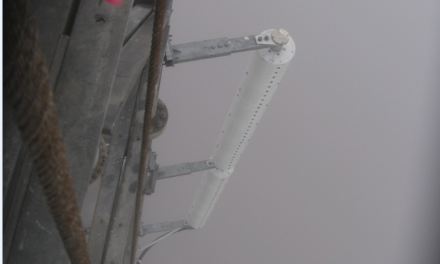Back to the microwave dish conversation. Even though microwave dishes come in a variety of sizes and varieties, they all perform the same type of function, to link at least two sites together, usually more. The microwave is then limited by line of sight (LOS), so if we wanted to link someone’s house with their lake house, the dish we mount at the main house has to be able to “see” the dish at the lake house unobstructed. We would both need towers for that because of all the trees between the two locations.
Some microwave dish uses are EMS, DOT, wireless internet, TV stations, old-time long distance, backhaul, and some types of satellite TV, which use parabolic dishes to talk to satellites. For the dishes to be able to move right and left and up and down enough to align them with their target dish at the other side of the path, the dishes cannot usually be mounted directly to the tower leg of the tower. They have to be mounted on a 4″ pipe, 8″–12″ off of the tower leg. That combined with the large covering on the front of the dish, called a radome, and the stiff arms that help hold the dish on the path once the paths are aligned, cause dishes to have huge structural consequences to the tower structure.
Simply, dishes place a large structural loading burden on the tower. That also means many towers with microwave dishes on them may not have much reserve loading for cellular antennas of cellular antenna upgrades.
In the below picture from Atlanta, you can see the tower on the left has at least five dishes, and they are pointed in several directions. Then at the right of the picture, you can see another tower with several dishes on it – the left tower is talking to the right tower, as well as several other towers.











